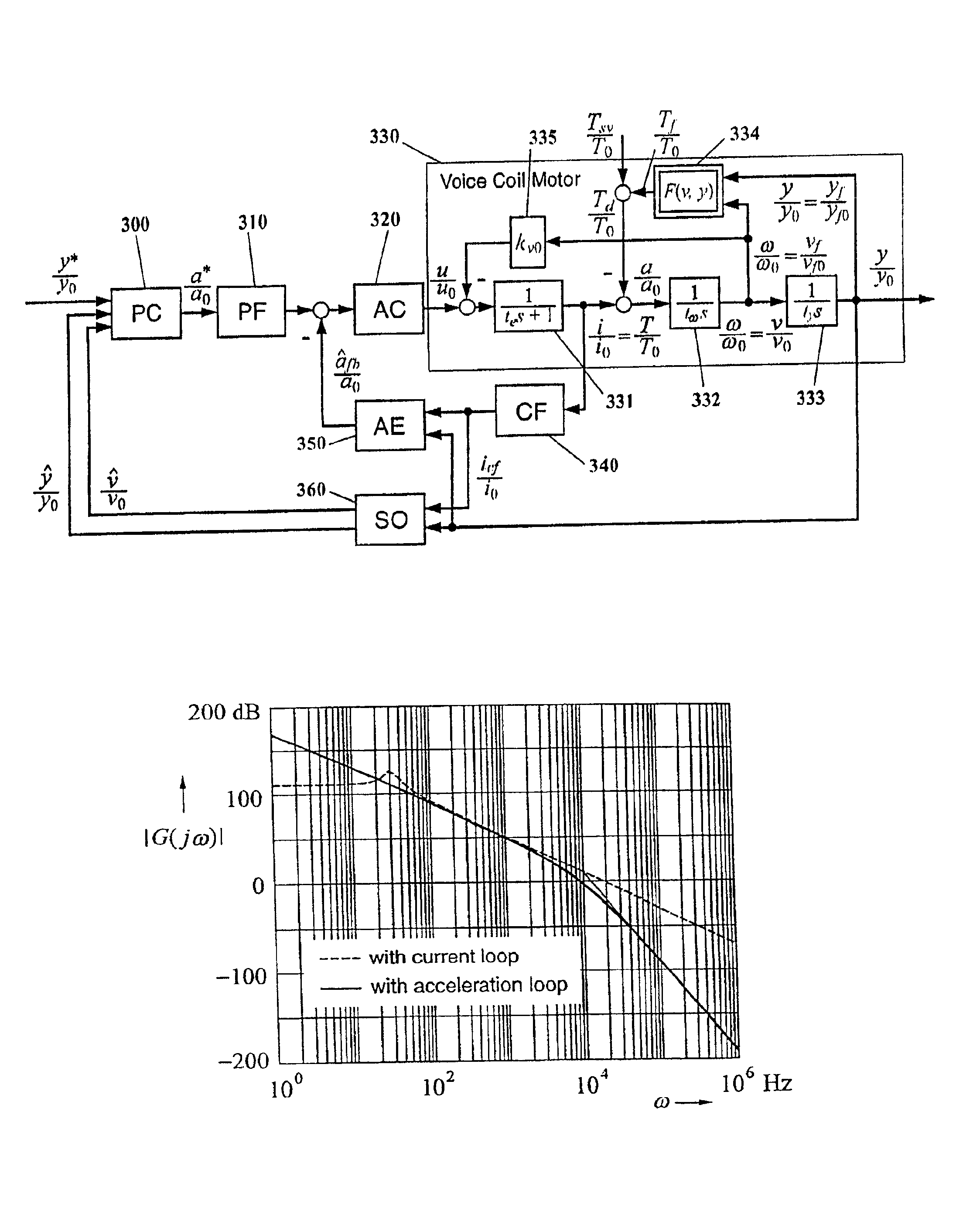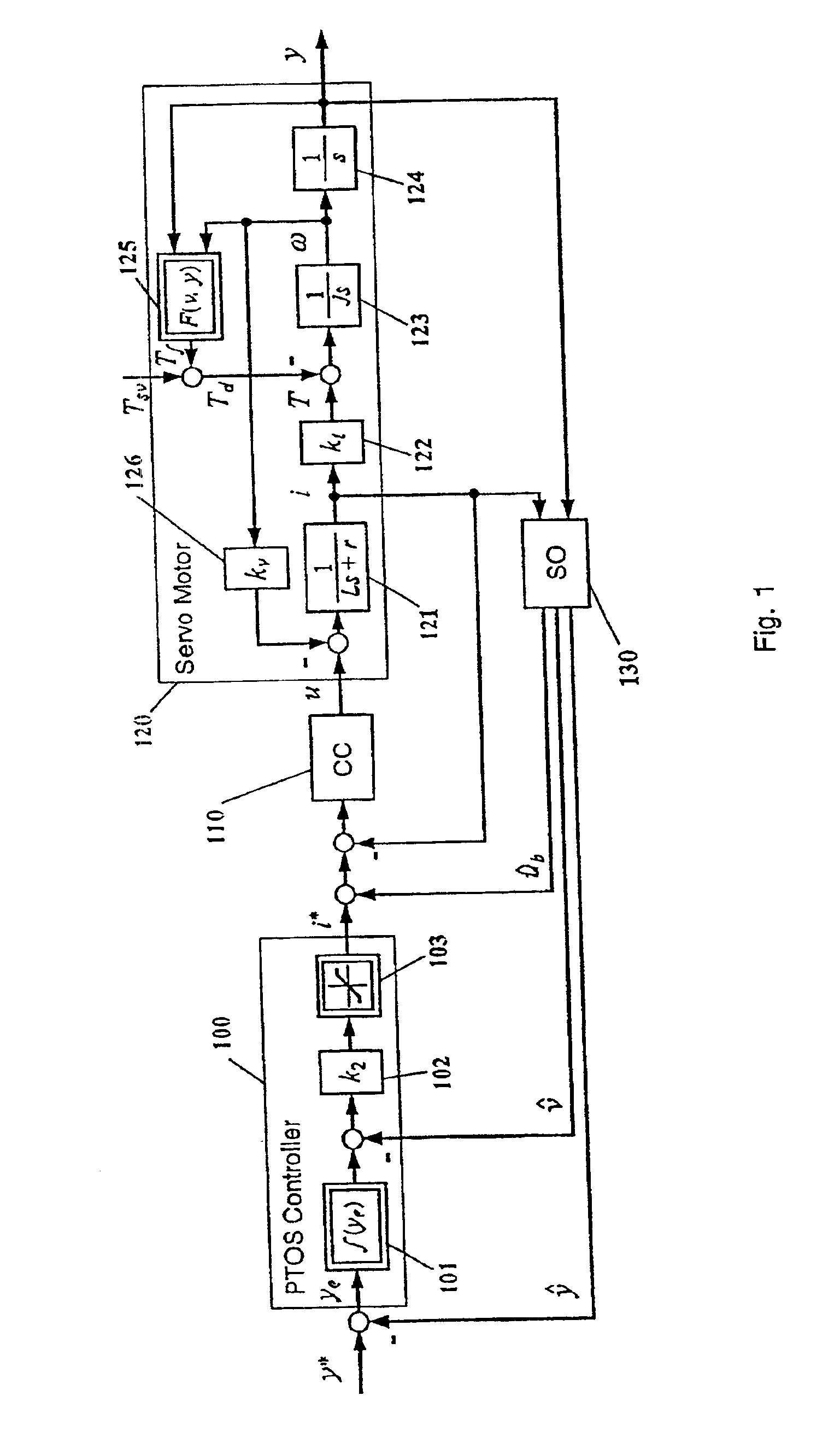Disturbance attenuation in a precision servomechanism by a frequency-separated acceleration soft sensor
a technology of frequency separation and attenuation, applied in the field of servomechanisms, can solve the problems of preventing the system accuracy of a servomechanism from further improvement, reducing system gain, and difficult to obtain a complete friction model, so as to improve the positioning accuracy of servomechanisms, overcome the effect of gain decreas
- Summary
- Abstract
- Description
- Claims
- Application Information
AI Technical Summary
Benefits of technology
Problems solved by technology
Method used
Image
Examples
Embodiment Construction
The preferred embodiment of the present invention, positioning control of a hard disk drive servomechanism, is described in detail in this section. The positioning control of the read / write head of a hard disk drive actuator involves two functions: track seeking and track following. In the track seeking, the head is forced to move to the target track as quickly as possible, while in the track following, the head is positioned precisely at the target track.
PTOS Description
To satisfy both requirements for track seeking and track following, mode switching control strategies, e.g., Proximate Time-Optimal Servomechanism (PTOS), are widely employed in disk drive industry. (See, for example, G. F. Frankllin, J. D. Powell and M. L. Workman, Digital Control of Dynamic Systems, second edition, Addison-Wesley Publishing Company, 1990). In the PTOS controller, a nonlinear control function causes the current amplifier to be saturated when the position error is larger than a predefined threshold ...
PUM
 Login to View More
Login to View More Abstract
Description
Claims
Application Information
 Login to View More
Login to View More - R&D
- Intellectual Property
- Life Sciences
- Materials
- Tech Scout
- Unparalleled Data Quality
- Higher Quality Content
- 60% Fewer Hallucinations
Browse by: Latest US Patents, China's latest patents, Technical Efficacy Thesaurus, Application Domain, Technology Topic, Popular Technical Reports.
© 2025 PatSnap. All rights reserved.Legal|Privacy policy|Modern Slavery Act Transparency Statement|Sitemap|About US| Contact US: help@patsnap.com



